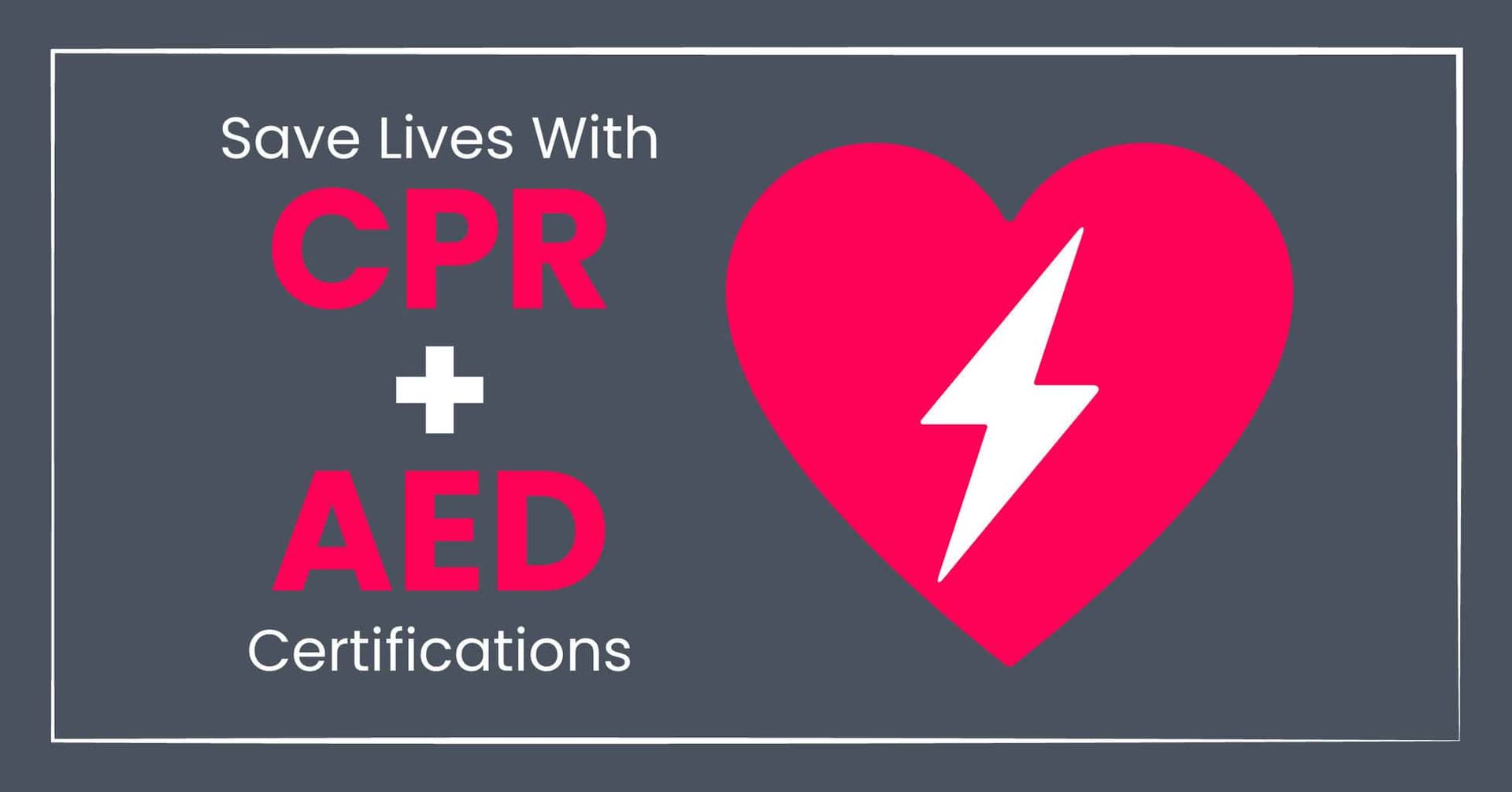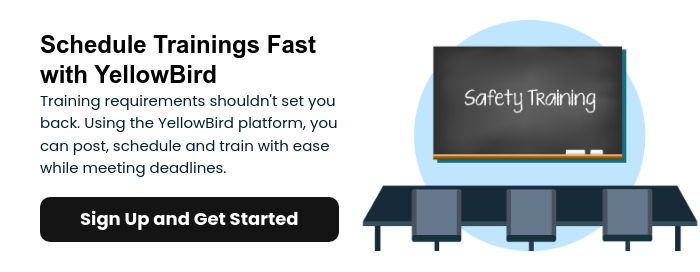Why Employees Should Have CPR and AED Certification

Why Employees Should Have CPR and AED Certification
Cardiac arrest happens when the heart suddenly fails to function properly, potentially causing individuals to collapse and lose consciousness. According to OSHA estimates, some 10,000 people experience cardiac arrest in their workplace every year. The first few minutes following cardiac arrest are critical. When it occurs, blood flow and breathing are severely inhibited or can stop altogether.
The survivability of cardiac arrest increases substantially when victims receive immediate emergency support. Many workplaces today provide automated external defibrillators (AED) which can help re-establish normal heart function following a cardiac arrest. When an AED isn’t available, cardiopulmonary resuscitation (CPR) is the next best option. CPR saves lives by ensuring oxygen and blood continue flowing to the brain until emergency response personnel can arrive on the scene. Unfortunately, only about half of employees can locate an AED in their workplace, and around 70 percent lack adequate training to administer CPR to a coworker.
Companies can improve the survival rates of cardiac arrest victims by providing CPR and AED certification training to their employees. Incorporating this training into your employee onboarding process ensures staff know how to respond when and if a cardiac arrest incident occurs. It’s equally essential to provide periodic refresher courses so that workers can keep their certifications up-to-date at all times.
The Impact of CPR and AED Training
Individuals are far more likely to survive cardiac arrest if they receive CPR from a bystander moments within its occurrence. Although the American Heart Association (AHA) provides CPR training to more than 12 million people every year, many who suffer from a cardiac arrest incident don’t receive the care they need in time. In many cases, nearby co-workers lack the education to respond with confidence. Employees who receive bystander CPR and AED training know precisely what to do when someone goes into cardiac arrest, potentially saving the lives of their co-workers or loved ones.
Companies do not need to spend a tremendous amount of money or time on basic training, and most instructor-led courses only take half a workday to complete. Facilitating AED and CPR training is a relatively simple commitment, but the effects can be profound.
Providing training for cardiac arrest response can yield a tremendous return on investment (ROI) that is impossible to measure with dollars and cents. The chance to save even a single life makes bystander CPR and AED training an invaluable investment for any employer.
Reasons for Getting CPR and AED Certified
Heart problems remain a significant public health challenge in the United States. The CDC
estimates that complications caused by heart disease are to blame for more than 650,000 fatalities every year in the country. As a result, heart disease remains the leading cause of death in the United States. Ensuring Americans have access to educational resources like resuscitation training plays an essential role in reducing mortality rates.
Individuals who become certified in bystander CPR and AED devices receive the training needed to keep cardiac arrest victims stable until help can arrive. Companies that invest in these training courses are not only protecting their employees but also the communities they serve.
Here are a few other reasons why employees should become CPR and AED certified:
1. Expert training is critically important
To administer CPR and AED effectively, workers need to receive proper training. Employees need to learn from licensed professionals how chest compressions work, where they should press on the chest, and at what pace. Likewise, workers should receive adequate education on how AED devices work to ensure they use them correctly the moment an incident happens.
2. Creates a safer work environment
Employees will feel safer knowing their colleagues are fully trained in CPR and AED administration, creating a more comfortable atmosphere for everyone in the workplace. There’s peace of mind in knowing someone will always be available and have the know-how when something goes wrong. In the case of a cardiac event, every employee will be nearby someone who is trained in CPR and AED, allowing everyone to feel more secure about their wellbeing at work.
3. Resuscitation skills are applicable everywhere
It’s important to note that nearly 90 percent of cardiac arrest incidents occur at home, not at work. Offering CPR training and AED certification equips workers with practical knowledge that they can use for the rest of their lives — both inside and outside the workplace. With CPR and AED training, your employees will be confident when responding to cardiac arrest situations whenever or wherever they happen. Whether they’re on a business trip or at home with loved ones, their training can potentially save a life when critical seconds count.
4. Employees feel valued
People enjoy working for a company that truly values their workers, and making an investment to continue the education of employees is an excellent way to show you care. CPR and AED training provides your staff with valuable skills that will enrich their lives for many years to come. The knowledge your workers gain will serve them both in the office and their personal lives.
By offering these training courses, you’re also helping to build a reputation for your company as an employer that isn’t only concerned about the bottom line. When employees feel appreciated by their company they will stick around longer and share their positive experiences with others. This will help draw more talent to your business while ensuring your most dedicated employees stay for the long haul.
The Takeaway
As more companies offer CPR and AED training to their employees, it becomes easier to minimize fatalities in the workplace caused by cardiac arrest. Consider introducing this training to your workers along with other emergency preparedness courses that can make your work environment a safer place. Within just a few hours, you can provide each of your employees with an education that just might save a life.
Ready to find a professional trainer? Get started today with YellowBird.


